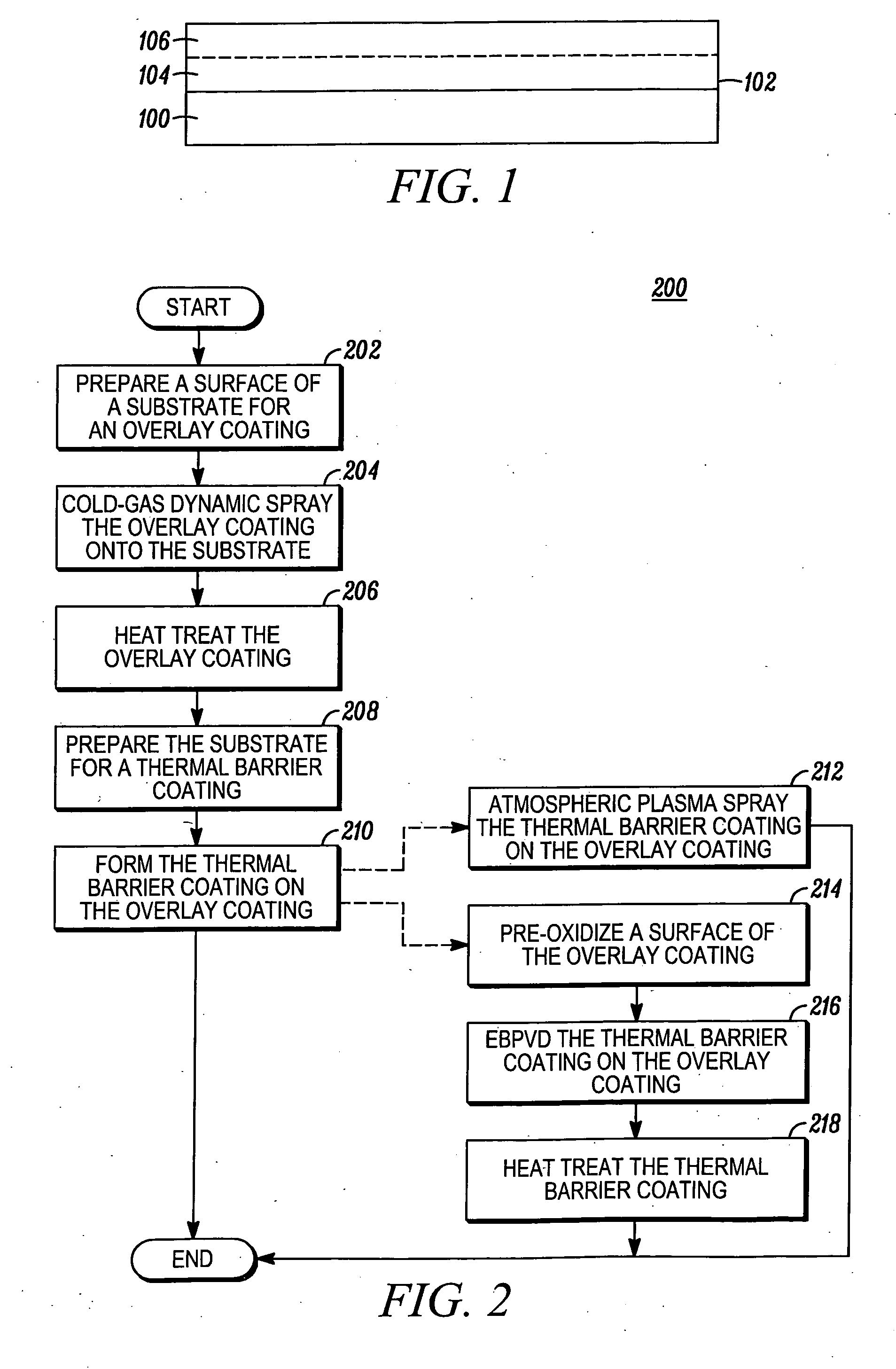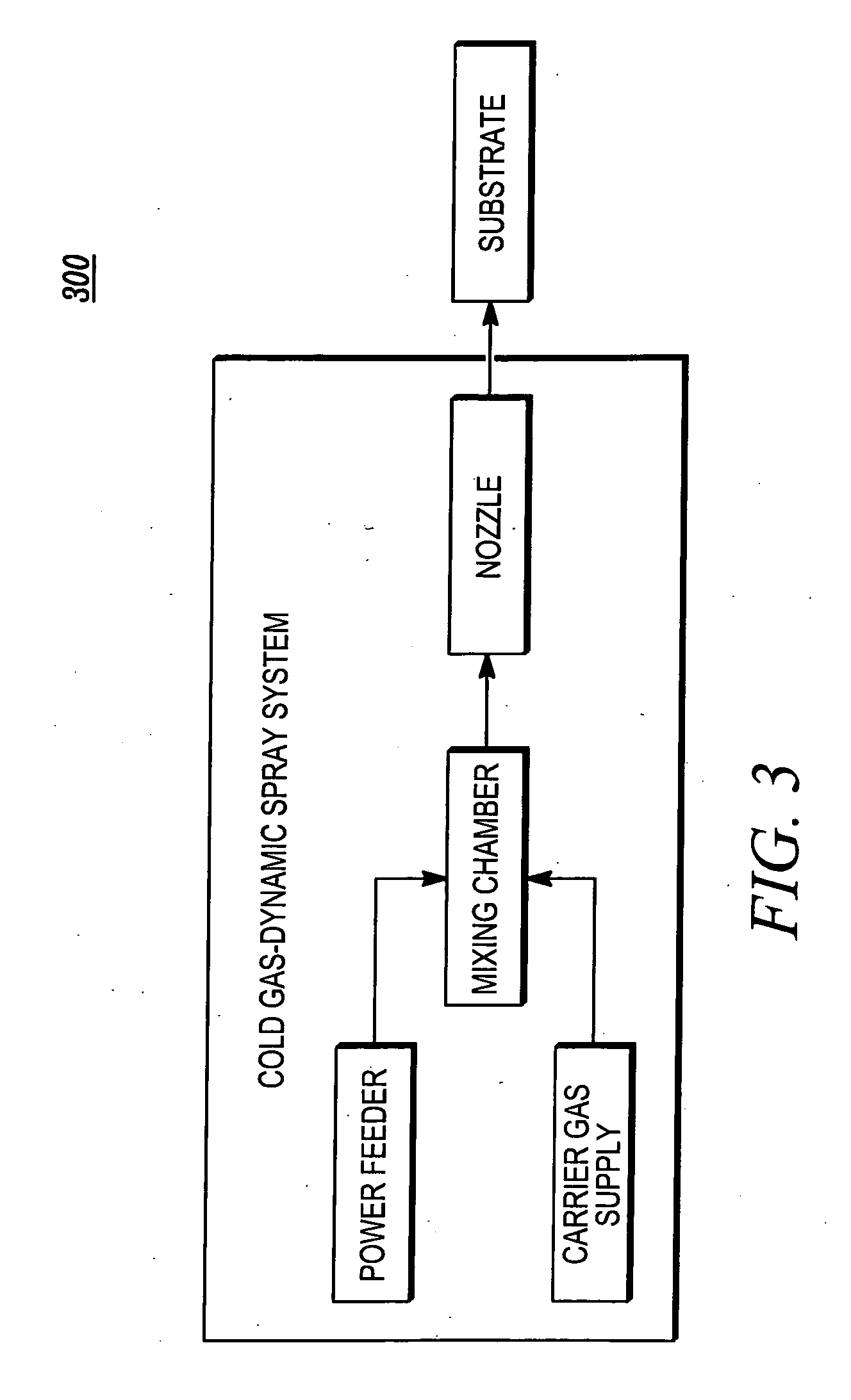Method for making an environment-resistant and thermal barrier coating system on a component
a technology of thermal barrier coating and component, applied in the direction of superimposed coating process, vacuum evaporation coating, plasma technique, etc., can solve the problems of unsuitable in other circumstances, unacceptably high degradation rate, and component stress loading and high hea
- Summary
- Abstract
- Description
- Claims
- Application Information
AI Technical Summary
Problems solved by technology
Method used
Image
Examples
example 1
[0032]A powder made up of standard MCrAlY, specifically, Co32Ni21Cr8Al0.5Y, was cold sprayed onto a MARM 247 superalloy substrates to form a coating having a thickness of 0.25 mm. The same powder was also low pressure plasma sprayed (LPPS) onto other MARM 247 substrates to form a 0.25 mm coating thereon. LPPS is the technique currently used in production to apply this type of coating. Both substrates were then heat treated at 1093° C. for 4 hrs to diffuse and homogenize the coatings.
[0033]Both the substrates were tested in a static oxidation furnace at 1093° C. The atmosphere in the furnace was static air and the substrates were periodically weighed to determine weight change. As shown in FIG. 4, the overlay coating sprayed by LPPS lost significant weight (4 mg / cm2) after about 70 hrs, while the cold sprayed overlay coating did not experience the same weight loss until after about 700 hrs of exposure.
example 2
[0034]The cold sprayed and LPPS sprayed overlay coatings of example 1, were shot peened and vibro polished to a surface finish of between 1-5 microns and then coated with a 7% YSZ thermal barrier coating. The thermal barrier coatings were each about 0.20 mm in thickness and were formed in an EB-PVD vessel. These samples were then tested in a cyclic oxidation furnace at 1120° C. using a 1-hour cycle. The samples were held at temperature for 50 min. and then quickly pulled out of the furnace and held in ambient air for 10 min. before being quickly returned to the hot furnace. The thermal barrier coatings spalled off during cyclic oxidation test. The thermal barrier coating on the LPPS sprayed bond coat spalled off at just under half the time the thermal barrier coating spalled off on the cold sprayed bond coat. Thus, cold or warm spraying the MCrAlY coating onto a substrate increases the life of a subsequently formed thermal barrier coating by a factor of two.
[0035]The coating system ...
PUM
| Property | Measurement | Unit |
|---|---|---|
| Temperature | aaaaa | aaaaa |
| Temperature | aaaaa | aaaaa |
| Temperature | aaaaa | aaaaa |
Abstract
Description
Claims
Application Information
 Login to View More
Login to View More - R&D
- Intellectual Property
- Life Sciences
- Materials
- Tech Scout
- Unparalleled Data Quality
- Higher Quality Content
- 60% Fewer Hallucinations
Browse by: Latest US Patents, China's latest patents, Technical Efficacy Thesaurus, Application Domain, Technology Topic, Popular Technical Reports.
© 2025 PatSnap. All rights reserved.Legal|Privacy policy|Modern Slavery Act Transparency Statement|Sitemap|About US| Contact US: help@patsnap.com



